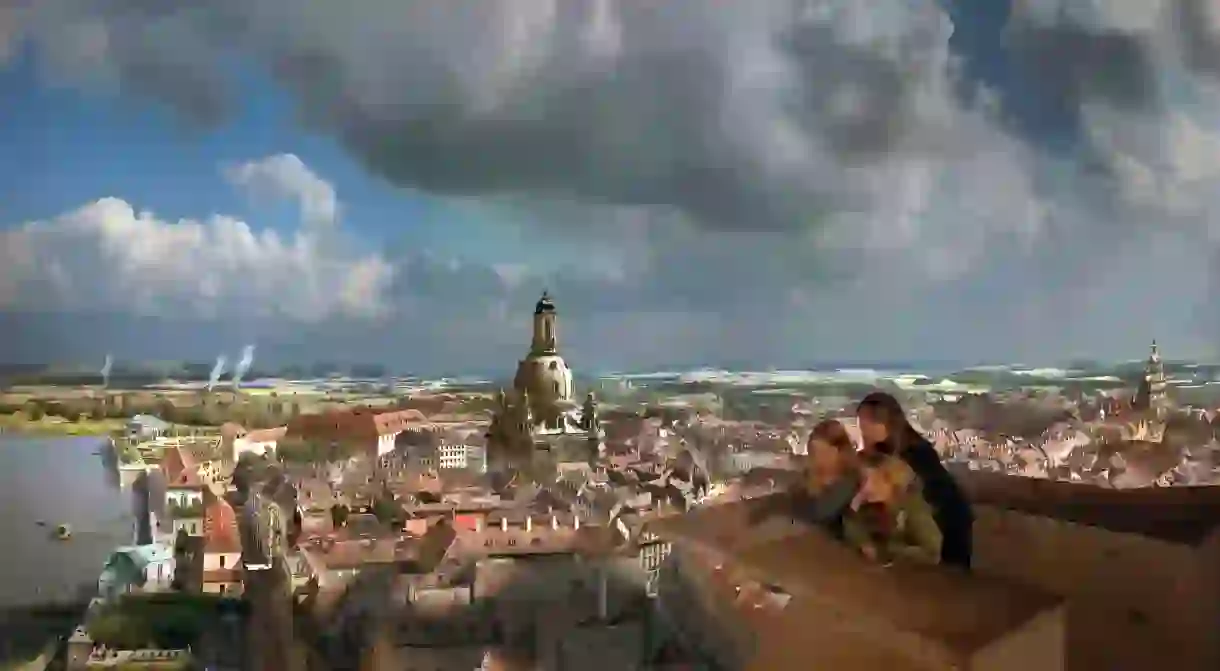12 Artists From Dresden You Should Know

For centuries, Dresden was one of Europe’s premier art and architecture cities, attracting the most talented locals and those from further afield. The Wettin royal family patronised many of these creatives, and in modern times they have continued to be drawn to the city because of its grand art reputation. Here are some of Dresden’s most significant artists.
Yadegar Asisi
In 2012, Berlin artist Yadegar Asisi created the stunning Panometer Dresden – a 360-degree baroque panorama of the city – periodically between 1695 and 1760. A few years later, he did the same for the city at its lowest point, in 1945 when it was little more than ashes and rubble.

Johann Friedrich Böttger & Ehrenfried Walther von Tschirnhaus
The most famous contemporary artists receive a great deal of hype, but few make as much difference to society as Johann Friedrich Böttger and Ehrenfried Walther von Tschirnhaus. They cooperated to create the first hard-fired porcelain in Europe – otherwise known as ‘white gold’. The world-famous Meißen manufacturer subsequently brought in untold wealth for Saxony.

Gerhard Richter
There can be little doubt about the most famous contemporary artist whose name is associated with Dresden: Gerhard Richter, born here in 1942, initially left the city as a child in order to flee the bombings. He defected from communist Dresden in March 1961 for democratic West Germany, and through his striking, abstract works he made a name as one of the most exciting artists in post-war Europe. Today, his best pieces sell for millions of euros.

Canaletto
If Richter is Dresden’s most famous artist born in the city, its most famous artist in residence is surely the Venetian great Canaletto. His instantly recognisable 1748 masterpiece of the city (the so-called Canaletto View), Dresden as seen from the Banks of the River Elbe below the Augustus Bridge, is located in the Old Masters Gallery.

Caspar David Friedrich
Up there with Théodore Géricault, Eugène Delacroix, JMW Turner and John Constable, Caspar David Friedrich was a hugely important Romantic artist. He lived and worked in Dresden most of his life, with his most famous piece of work his (possible self-portrait) 1818 Wanderer Above the Sea of Fog. Packed with religious symbolism, Friedrich’s landscapes reveal an age in which nature and emotion were extolled over cool reason.

Matthäus Daniel Pöppelmann
Matthäus Daniel Pöppelmann is best known for his magisterial Zwinger complex, a series of buildings in central Dresden that are labelled a Gesamptkunstwerk – a ‘total work of art’. Pöppelmann, one of the great architects, lived in Dresden from 1680 and was state architect for August II from 1705, creating numerous fabulously ornamented buildings.

Gottfried Semper
Though born in Hamburg, it was in Dresden where Gottfried Semper made a lasting impression, reflected in his statue on the Altstadt’s Brühlschen Terrasse. Semper built numerous notable buildings in the city, many destroyed: his Court Theatre burned down, the Nazis destroyed his synagogue in 1938 and others were lost in the Allied bombing raids in 1945. His superb Semper Gallery and Semper Opera were rebuilt after the war.

Ernst Ludwig Kirchner
Along with Karl Schmidt-Rottluff, Erich Heckel and Fritz Bleyl, Ernst Ludwig Kirchner was a founding member of Die Brücke art group. Kirchner and Bleyl were students at Dresden’s Technical University, and their group were leading proponents of Expressionism, a radically modernist and hugely influential (inter alia) art, architecture, literature and music movement in the early 20th century.

Otto Dix
Otto Dix was a key figure in the Dresden Secession movement in the early years of the 20th century. He was a student in the city pre- and post-World War One and central to the Dresden Secession. No artist portrayed with such cutting, brutal honesty Germany’s Weimar Republic as vividly as he did. The War informed his works, and under the rubric of Neue Sachlichkeit (roughly, New Objectivity) his often bleak, violent depictions of war and street life, coming together in disfigured war veterans, shocked many to their core.

Johann Gottfried Silbermann
The Dresden Hofkirche, the city’s Catholic cathedral since 1751, is one of Saxony’s most significant buildings: numerous leading members of the Wetting royal family lie here, it was almost totally destroyed in the 1945 Allied bombing raids and subsequently left as a war memorial. Rebuilt after 1989, the Hofkirche’s importance increases because it holds the last organ created by the great Gottfried Silbermann, the city’s master carpenter and state organ builder when it was built.

AR Penck
AR Penck, who died in 2017, was a Dresden-born artist who first made his name in the confining atmosphere of communist East Germany. Experimental and a leading advocate of neo-Expressionism, the secret police put him and his collaborators under surveillance in the 1970s, notably after success in the West. He was thrown out of the country in 1980, but his work continued to garner acclaim.














